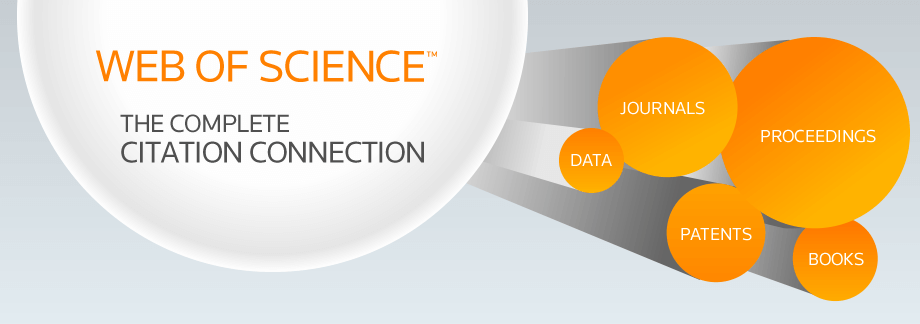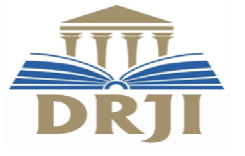INTERNATIONAL JOURNAL OF CREATIVE RESEARCH THOUGHTS - IJCRT (IJCRT.ORG)
International Peer Reviewed & Refereed Journals, Open Access Journal
IJCRT Peer-Reviewed (Refereed) Journal as Per New UGC Rules.
ISSN Approved Journal No: 2320-2882 | Impact factor: 7.97 | ESTD Year: 2013
Call For Paper - Volume 13 | Issue 11 | Month- November 2025
Scholarly open access journals, Peer-reviewed, and Refereed Journals, Impact factor 7.97 (Calculate by google scholar and Semantic Scholar | AI-Powered Research Tool) , Multidisciplinary, Monthly, Indexing in all major database & Metadata, Citation Generator, Digital Object Identifier(CrossRef DOI)
Contact Us Click Here
WhatsApp Contact Click Here
Volume 13 | Issue 8
| IJCRT Journal front page | IJCRT Journal Back Page |
Paper Title: Activated Carbon for Cleaner Air, Water, and a Healthier Planet
Publisher Journal Name: IJCRT
Your Paper Publication Details:
Published Paper ID: - IJCRTBF02042
Register Paper ID - 292637
Title: ACTIVATED CARBON FOR CLEANER AIR, WATER, AND A HEALTHIER PLANET
Author Name(s): Sk. Beebi, Sd. Vaziha Tahaseen, P. Suresh, K.R. Manjula
Publisher Journal name: IJCRT
Volume: 13
Issue: 8
Pages: 346-355
Year: August 2025
Downloads: 218
Abstract
Licence: creative commons attribution 4.0
License
Keywords
Activated carbon, plant biomass, adsorption, sustainable, climate change.
License
Paper Title: Cloudbursts, Extreme Rainfall and Flood Risk in a Warming Climate: Processes, Evidence, and Policy Implications
Publisher Journal Name: IJCRT
Your Paper Publication Details:
Published Paper ID: - IJCRTBF02041
Register Paper ID - 292636
Title: CLOUDBURSTS, EXTREME RAINFALL AND FLOOD RISK IN A WARMING CLIMATE: PROCESSES, EVIDENCE, AND POLICY IMPLICATIONS
Author Name(s): M. SrinivasaRao, Dr J Ramudu, Dr T. Sambasiva Rao
Publisher Journal name: IJCRT
Volume: 13
Issue: 8
Pages: 342-345
Year: August 2025
Downloads: 163
Abstract
Cloudbursts--intense, short-duration downpours over small areas--are increasingly implicated in flash floods and landslide disasters across steep terrains, notably the Himalaya. This paper synthesizes physical mechanisms (thermodynamic moisture scaling, mesoscale dynamics, and orographic forcing), recent detection/attribution evidence, and South Asia case studies to assess whether and how climate change is intensifying extreme sub-daily precipitation and flood risk. We also outline data and policy priorities: densified observations, convective-scale modelling, impact-based warnings, land-use regulation, and nature-based solutions. Findings align with IPCC AR6 conclusions that heavy precipitation is increasing with warming; regional attribution studies further link recent catastrophic floods in Pakistan and the western Himalaya to anthropogenic climate change.
Licence: creative commons attribution 4.0
License
Keywords
Cloudbursts, Extreme Rainfall and Flood Risk in a Warming Climate: Processes, Evidence, and Policy Implications
License
Paper Title: Conservation of biodiversity and sustainable development are crucial for addressing desertification and climate change
Publisher Journal Name: IJCRT
Your Paper Publication Details:
Published Paper ID: - IJCRTBF02040
Register Paper ID - 292517
Title: CONSERVATION OF BIODIVERSITY AND SUSTAINABLE DEVELOPMENT ARE CRUCIAL FOR ADDRESSING DESERTIFICATION AND CLIMATE CHANGE
Author Name(s): Nagarathnamma Yammanuri, Chandra Obul Reddy Puli
Publisher Journal name: IJCRT
Volume: 13
Issue: 8
Pages: 333-341
Year: August 2025
Downloads: 173
Abstract
Sustainable development and biodiversity conservation are two intertwined fields that prioritize ecosystem preservation, social advancement, economic expansion, and environmental preservation. The most pressing environmental, socio-economic, and political problem of our time is climate change, which is also one of the main drivers of desertification. Desertification is mostly caused by changes in the climate and human activity like overuse, improper farming methods, deforestation, rapid population increase, and unauthorized access to land and rights. One of the global environmental problems, desertification is the ongoing deterioration of arid landscapes, leading to a decrease in biological productivity. This, in turn, causes a decline in plant biomass, a reduction in land productivity for livestock, crop yields, and societal welfare. However, the effects of desertification brought on by human activity and global warming present difficult problems for the ecosystem today. Because of the extreme variations in temperature and precipitation, ecosystem services in arid regions are particularly susceptible to the effects of global warming. Climate change adaptation and mitigation are two potential strategies identified to address the effects of global warming or desertification. It involves breeding crops, using irrigation techniques to cool the environment, trading plants for carbon, and utilizing carbon capture and storage technology. Therefore, biodiversity conservation and global climate change reduction are linked to ecosystem management strategies aimed at halting desertification. Therefore, the population of the drylands may benefit from greater co-operation and efficacy that arises from the combined implementation of significant environmental accords.
Licence: creative commons attribution 4.0
License
Keywords
Climate change (CC), Desertification, Ecosystem, Biodiversity
License
Paper Title: A Review on Traditional Ecological Knowledge in Biodiversity and Land Conservation.
Publisher Journal Name: IJCRT
Your Paper Publication Details:
Published Paper ID: - IJCRTBF02039
Register Paper ID - 292518
Title: A REVIEW ON TRADITIONAL ECOLOGICAL KNOWLEDGE IN BIODIVERSITY AND LAND CONSERVATION.
Author Name(s): Dr.Ch.Chaitanya, Dr.G.Vani, Dr.Sk.Parveen
Publisher Journal name: IJCRT
Volume: 13
Issue: 8
Pages: 322-332
Year: August 2025
Downloads: 137
Abstract
Through generations of close engagement with their surroundings, Indigenous and local communities have developed cumulative, adaptive, and place-based knowledge known as Traditional Ecological Knowledge (TEK). TEK offers a comprehensive understanding of ecosystems, species behavior, seasonal cycles, and sustainable resource management. It is based on cultural beliefs, practices, and oral traditions. TEK is becoming more widely acknowledged as an essential supplement to scientific approaches in biodiversity and land conservation, especially as society contends with rapid biodiversity loss, land degradation, and climate change (1,2).The importance of TEK in protecting ecological balance and managing natural resources is examined in this review. TEK-based methods demonstrating sustainable land use and biodiversity conservation include community-managed forests, rotational farming, sacred groves, and traditional irrigation systems (3). Through culturally embedded practices, indigenous communities around the world--such as Aboriginal Australians, the Inuit, and in India, the Bishnoi, Apatani, and Khasi-Garo tribes--have successfully conserved ecosystems. Where scientific data is scarce, TEK excels in community-led species identification and habitat restoration initiatives (4,5).Globalization, ecosystem disruption, cultural deterioration, and weak legal protections pose major threats to TEK despite its importance (Aswani et al., 2018). Furthermore, urgent calls for Indigenous data sovereignty and equitable partnerships have emerged in reaction to ethical concerns surrounding TEK exploitation (3). Future conservation efforts must bridge TEK and contemporary science through ethical collaboration, policy support, and participatory models (2,4). This paper advocates for the recognition, preservation, and integration of TEK into national and global conservation strategies. Respecting Indigenous rights and empowering communities will foster biodiversity resilience, cultural continuity, and sustainable development.
Licence: creative commons attribution 4.0
License
Keywords
Traditional Ecological Knowledge (TEK), Biodiversity Conservation,Indigenous Knowledge Systems,Sustainable Land Management, Community-Based Conservation
License
Paper Title: Advancing Biodiversity Conservation through Sensor-Based Environmental Monitoring
Publisher Journal Name: IJCRT
Your Paper Publication Details:
Published Paper ID: - IJCRTBF02038
Register Paper ID - 292519
Title: ADVANCING BIODIVERSITY CONSERVATION THROUGH SENSOR-BASED ENVIRONMENTAL MONITORING
Author Name(s): Dr.Sara Palaparthy, Dr. Kapu Sreenu, Dr.N.Tirupathi Swamy, G.R.N.S.Sujatha, D.Vasu Babu, Prof. B.Sujatha
Publisher Journal name: IJCRT
Volume: 13
Issue: 8
Pages: 316-321
Year: August 2025
Downloads: 142
Abstract
Biodiversity is the variety of flora and fauna on Earth. It is crucial for maintaining healthy ecosystems, supporting human life, and ensuring the planet's long-term sustainability. Unfortunately, human activities such as deforestation, pollution, climate change, and urban expansion are causing rapid loss of biodiversity around the world. To address this urgent issue, scientists and conservationists are increasingly turning to modern sensor technologies as powerful tools for monitoring and protecting wildlife and natural habitats. Technologies like camera traps, acoustic sensors, drones, and satellite imaging are now being widely used to observe animals, track environmental changes, and collect data across large and remote areas. These tools allow for real-time, non-invasive, and continuous monitoring of ecosystems, reducing the need for physical presence in the field. This paper reviews how different types of sensors are used in biodiversity research and conservation projects, how they are deployed in various environments, and how their data is processed using advanced technologies such as Artificial Intelligence (AI) and Geographic Information Systems (GIS). Overall, the study highlights how sensor technologies are transforming the way we monitor and conserve biodiversity, helping to make more informed and effective decisions to protect nature. It's need of the hour to conserve the nature for present and future generations. It's our responsibility to protect biodiversity by using latest technologies. This year i.e. 2025 theme of world Nature conservation day is also "Connecting people and plants, Exploring digital innovation in wildlife conservation" also supports India's LiFE (Life Style for Environment).
Licence: creative commons attribution 4.0
License
Keywords
camera traps, acoustic sensors, drones, satellite imaging
License
Paper Title: The impacts of climate change on the life style of birds
Publisher Journal Name: IJCRT
Your Paper Publication Details:
Published Paper ID: - IJCRTBF02037
Register Paper ID - 292520
Title: THE IMPACTS OF CLIMATE CHANGE ON THE LIFE STYLE OF BIRDS
Author Name(s): Dr.U. Srineetha
Publisher Journal name: IJCRT
Volume: 13
Issue: 8
Pages: 306-315
Year: August 2025
Downloads: 135
Abstract
Climate change stands as one of the most pressing environmental issues of the 21st century, exerting profound and wide-ranging effects on ecosystems and biodiversity. Today's organisms have evolved from ancestors that endured significant climatic fluctuations in the past; however, they now face a host of new, human-induced challenges, including the unprecedented pace of current climate change. Birds, in particular, serve as highly sensitive indicators of these shifts, with their migration patterns, breeding schedules, feeding habits, and habitat preferences increasingly disrupted by altered climate conditions. Since birds rely heavily on stable environmental cues for their survival, even minor changes in temperature, rainfall, or seasonal timing can trigger substantial ecological imbalances. Migration and reproduction in many avian species are governed by internal biological mechanisms shaped by long-term natural selection, ensuring that arrival at and departure from breeding grounds align with moderate weather, peak food resources, and adequate nesting sites. Egg-laying timing typically depends on both internal clocks and local environmental conditions to maximize food availability for raising offspring. Climate change is disrupting this balance, causing mismatches in food supply, snow cover, and other critical factors, which could jeopardize successful migration and reproduction unless species adapt to new conditions. Non-migratory (resident) birds are also vulnerable if changes in temperature or precipitation lead to seasonal mismatches in breeding and food availability. Projections that many current climate types will vanish while novel climates emerge indicate that avian communities may be reshaped dramatically through extinctions and range shifts. This study seeks to investigate the complex effects of climate change on bird life, using case studies, field observations, and ecological modeling. A clearer understanding of how birds respond to environmental pressures will help identify the intrinsic and extrinsic factors that could hinder their ability to adapt--an urgent priority for future research.
Licence: creative commons attribution 4.0
License
Keywords
bird, climate change, bird migration, avian reproduction penology, egg lying
License
Paper Title: Ecological Studies on the Flora and Fauna of Ahobilam Reserved Forests within the Nallamala Biosphere Reserve
Publisher Journal Name: IJCRT
Your Paper Publication Details:
Published Paper ID: - IJCRTBF02036
Register Paper ID - 292522
Title: ECOLOGICAL STUDIES ON THE FLORA AND FAUNA OF AHOBILAM RESERVED FORESTS WITHIN THE NALLAMALA BIOSPHERE RESERVE
Author Name(s): Dr.H.Rama Subba Reddy
Publisher Journal name: IJCRT
Volume: 13
Issue: 8
Pages: 288-305
Year: August 2025
Downloads: 157
Abstract
The Eastern Ghats' Nallamala Biosphere Reserve includes the Ahobilam Reserved Forests, which are home to a wide variety of plants and animals. This study evaluated species diversity by conducting ecological surveys in riparian, dry deciduous, and moist deciduous ecosystems. In addition to a number of therapeutic understory plants essential to regional ethnomedicine, vegetation research identified dominating tree species such Anogeissus latifolia, Tectona grandis, and Cochlospermum religiosum. Bengal tigers (Panthera tigris), leopards (Panthera pardus), sambar deer (Rusa unicolor), Indian pangolins (Manis crassicaudata) and many bird and insect species were among the ecologically significant species found in the area, according to research on faunal diversity conducted with line transects and camera traps. Simpson's and Shannon-Wiener's species diversity indexes showed moderate to high biodiversity. Riparian and mixed-deciduous environments with intricate canopy and understory structure were highly correlated with the occurrence of wildlife. The results highlight Ahobilam's ecological significance as a hotspot for biodiversity and a useful wildlife corridor in the NSTR ecosystem. However, habitat degradation and pilgrim inflow pose hazards to the area. To maintain the region's floral and faunal richness, conservation measures like controlled tourism, habitat preservation, and biodiversity monitoring are advised.
Licence: creative commons attribution 4.0
License
Keywords
Ahobilam, Nallamala, Flora, Fauna, Biodiversity, Habitat, Conservation.
License
Paper Title: Biodiversity Conservation and Sustainable Development: Addressing Desertification and Climate Change
Publisher Journal Name: IJCRT
Your Paper Publication Details:
Published Paper ID: - IJCRTBF02035
Register Paper ID - 292523
Title: BIODIVERSITY CONSERVATION AND SUSTAINABLE DEVELOPMENT: ADDRESSING DESERTIFICATION AND CLIMATE CHANGE
Author Name(s): Dr.Kugarthi Jayalakshmi
Publisher Journal name: IJCRT
Volume: 13
Issue: 8
Pages: 275-287
Year: August 2025
Downloads: 145
Abstract
This paper addresses the "Triple Challenge" of climate change, desertification, and biodiversity loss, arguing that fragmented responses are inadequate. It advocates for integrated, transdisciplinary solutions and nature-based approaches, recognizing synergistic effects and shared drivers. The research uses extensive mixed-methods, combining quantitative (remote sensing, GIS) with qualitative (case studies, participatory action research). It values co-design, multi-criteria analysis, and frameworks integrating social and ecological aspects. Key findings show integrated land management improves biodiversity and ecosystem services, especially in desertified areas. Successful conservation hinges on effective governance, flexible management, and local/traditional knowledge, offering superior economic trade-offs. Empowering locals and integrating their knowledge is crucial for collaborative, equitable conservation. This fosters ownership, improves initiative efficiency, and promotes local prosperity. Community-based ecotourism models sustainable human-natural system development.
Licence: creative commons attribution 4.0
License
Keywords
? Main topics | Biodiversity Conservation, Climate Change, Desertification, Sustainable Development ? Key methods | Mixed-Methods, Participatory Action Research ? Central concepts | Integrated Solutions, Community Empowerment
License
Paper Title: Sensors and IoT in Aquaculture: A Modern Approach to Sustainable Farming
Publisher Journal Name: IJCRT
Your Paper Publication Details:
Published Paper ID: - IJCRTBF02034
Register Paper ID - 292524
Title: SENSORS AND IOT IN AQUACULTURE: A MODERN APPROACH TO SUSTAINABLE FARMING
Author Name(s): Mrs. N. Suneetha, Dr. G. Swathi
Publisher Journal name: IJCRT
Volume: 13
Issue: 8
Pages: 272-274
Year: August 2025
Downloads: 154
Abstract
This article examines how the integration of connected sensor systems and advanced analytical models is transforming the aquaculture industry. The convergence of these technologies provides a powerful framework for real-time monitoring and data collection, allowing for more informed and strategic management of aquatic farms. By leveraging these tools, producers can optimize operational efficiency, mitigate environmental impact, and proactively address risks like disease outbreaks. While challenges exist regarding data reliability and system complexity, continued innovation and collaboration are expected to make these technologies central to the future of sustainable aquaculture.
Licence: creative commons attribution 4.0
License
Keywords
Aquaculture, Smart Farming, Internet of Things (IoT), Sensors, Data Analytics, Optimization, Sustainability.
License
Paper Title: "A study on Ecosystem services provided by sea weeds: "In the silent forests beneath the waves, seaweeds weave the fabric of ocean life."
Publisher Journal Name: IJCRT
Your Paper Publication Details:
Published Paper ID: - IJCRTBF02033
Register Paper ID - 292525
Title: "A STUDY ON ECOSYSTEM SERVICES PROVIDED BY SEA WEEDS: "IN THE SILENT FORESTS BENEATH THE WAVES, SEAWEEDS WEAVE THE FABRIC OF OCEAN LIFE."
Author Name(s): Smt. G.R.N.S. Sujatha, Dr. P. Swamy Naidu, Dr. P. Sara, Smt. B. Kumari, Dr D. Madhu Sudhakar
Publisher Journal name: IJCRT
Volume: 13
Issue: 8
Pages: 265-271
Year: August 2025
Downloads: 139
Abstract
The Millennium Ecosystem Assessment (MEA) and the Common International Classification of Ecosystem Services (CICES) are the two main classification schemes that can be used to categorize ecosystem services. The ecosystem services are separated into four main service clusters: providing, cultural, regulating, and sustaining. However, the "MEA supporting services" are viewed by the CICES system as an organism's intrinsic function rather as an ecosystem service. Therefore, the provisioning, regulating and cultural CICES ecosystem services that one organism provides are all based on one function. These ecological services can be examined for the species of plants, animals, or environment. The blue-green economy and climate change are making seaweeds, frequently referred to as marine macro algae, one of the most significant organisms in estuary and seawater habitat ecosystems. Throughout the beginning, seaweeds and humans have been connected, mostly because they provide food, textiles, biochemicals, natural medicine, ornamental materials, inspiration for art, and aesthetic qualities in many coastal communities. These are also being researched as carbon sequestration, green carbon, and potential sources for the pharmaceutical and biomedical industries. The ecological functions that seaweeds offer, their effects on human existence, and the preservation of ecosystem condition are all succinctly reviewed here.
Licence: creative commons attribution 4.0
License
Keywords
Millennium Ecosystem Assessment, Ecological services, The blue-green economy, climate change, Carbon sequestration
License
Paper Title: Orchid Sustainable Use in Thailand
Publisher Journal Name: IJCRT
Your Paper Publication Details:
Published Paper ID: - IJCRTBF02032
Register Paper ID - 292526
Title: ORCHID SUSTAINABLE USE IN THAILAND
Author Name(s): K. Thammasiri
Publisher Journal name: IJCRT
Volume: 13
Issue: 8
Pages: 254-264
Year: August 2025
Downloads: 125
Abstract
Orchid sustainable use in Thailand started from tissue culture research in some universities in 1967. Later in 1972, orchid tissue culture business expanded rapidly to over 30 million plantlets and employed over 300 workers in 15 labs with about 2.4 million US dollars. The suitable protocols and low-cost tissue culture were developed, as well as conventional breeding program for outstanding cultivars for international markets by the government organizations, institutions, growers, and private companies. The export value started from less than one million US$ to about 82 million US$ in 2022. Major growing factors in natural growing habitats are concerned for appropriate production technology after tissue cultured plantlets. They are altitude, light, temperature, relative humidity, nutrients, and air movement. At present, saran houses constructed with cement poles, cement benches, galvanized pipes for hanging orchid baskets, and black netted nylon roof with 50-60% shade and open sides are developed for low cost, long lasting, and suitability for growing tropical orchids for cut-flower and potted orchids. The cultivation is mostly for many outstanding cultivars of pink-red, white, and yellow-green flowered dendrobiums and blue, pink, and yellow flowered vandaceous orchids which need hot and humid conditions. A complete cycle of orchid production which need breeding program, tissue culture, planting materials (mainly coconut husks, charcoal, and cement block), plastic containers, watering, fertilizer, pest control, post-harvest technology, and transport from farm to packaging houses are effectively implemented. Thailand is famous for exporting cut-flower orchids applying low-cost cultivation but high production. Orchids continue to dominate other ornamental crops in Thailand due to better technology know-how, suitable climatic conditions for dendrobiums and vandaceous orchids, experienced and skillful growers, and exporters, as well as their nationwide popularity. Apart from all these, orchids are a symbol of Thailand that reflects the country's pride internationally.
Licence: creative commons attribution 4.0
License
Keywords
Thailand, orchid tissue culture, a complete cycle of orchid production
License
Paper Title: Nanotechnology and Nano-Food - A Promising Choice for Future Food Security
Publisher Journal Name: IJCRT
Your Paper Publication Details:
Published Paper ID: - IJCRTBF02031
Register Paper ID - 292446
Title: NANOTECHNOLOGY AND NANO-FOOD - A PROMISING CHOICE FOR FUTURE FOOD SECURITY
Author Name(s): G.Sirisha
Publisher Journal name: IJCRT
Volume: 13
Issue: 8
Pages: 247-253
Year: August 2025
Downloads: 126
Abstract
Nanotechnology concerns with the manipulation of materials at the nano scale. It paves a way for the novel approach in sustainable farming to enhance food production. Nano-food is the one that is cultivated, produced, processed and packaged using nanotechnology. Nanotechnology helps to maintain healthy soil-plant system fostered with the usage of nano fertilizers. Nanoengineering addresses the scarcity of water resources, soil erosion and pest management. Nanoparticle carriers increase the soil fertility, plant growth and yield production. Nanosensors help the plants to absorb optimum quantity of fertilizers, water, sunlight, resulting to a huge harvest. Nanoparticles of metal oxides like ZnO2, Alumina Silicates play the role of intelligent biocides for effective pest control with less damage to the soil fertility. DNA sequencing using nanotechnology with nanoparticles like 3nm mesophorous silica nano particles, graphene nanoribbons for crop improvement. The nanoparticles like Ag, Zn, Cu and Silica particles are effectively used for crop protection. Smart Dust nanosensors works for precision agriculture. Nano Graphene used in food packaging increases the shell life of food product and protects the nutrient quality. The efficient use of nanotechnology in cultivating, harvesting, processing and packaging agricultural goods ensures the quality and durability of nano food. This paper outlines the applications of nanotechnology in cultivating and producing nano-based food. This paper discusses the challenges of nanotechnology and the accumulation of nanoparticles in soil, water, and plants. So, nanotechnology and nano-food can be the best promising choice for future food security.
Licence: creative commons attribution 4.0
License
Keywords
Nanotechnology, nano-food, nano engineering, nano sensors.
License
Paper Title: Climate Change and Sustainable Development: Challenges and Opportunities in Andhra Pradesh
Publisher Journal Name: IJCRT
Your Paper Publication Details:
Published Paper ID: - IJCRTBF02030
Register Paper ID - 292447
Title: CLIMATE CHANGE AND SUSTAINABLE DEVELOPMENT: CHALLENGES AND OPPORTUNITIES IN ANDHRA PRADESH
Author Name(s): Bodavula Sridevi, Devarapalli Uma
Publisher Journal name: IJCRT
Volume: 13
Issue: 8
Pages: 240-246
Year: August 2025
Downloads: 102
Abstract
Andhra Pradesh, situated along India's southeastern coastline, is highly vulnerable to the multifaceted impacts of climate change. The state's socio-economic structure, heavy dependence on agriculture, dense population, and fragile coastal ecosystem amplify its exposure to climate-induced risks. This paper examines the regional impacts of climate change on agriculture, water resources, biodiversity, and public health, alongside policy responses and adaptive capacities. It further explores sustainable development opportunities through renewable energy, climate-resilient agriculture, and green infrastructure. Drawing from national and state-level frameworks, the paper provides strategic insights into aligning developmental goals with climate resilience in Andhra Pradesh.
Licence: creative commons attribution 4.0
License
Keywords
Climate Change and Sustainable Development: Challenges and Opportunities in Andhra Pradesh
License
Paper Title: PHYTOCHEMISTRY AND PHARMACOLOGICAL REVIEW OF SYZYGIUM CUMINI
Publisher Journal Name: IJCRT
Your Paper Publication Details:
Published Paper ID: - IJCRTBF02029
Register Paper ID - 292448
Title: PHYTOCHEMISTRY AND PHARMACOLOGICAL REVIEW OF SYZYGIUM CUMINI
Author Name(s): Dr. Sailaja C S
Publisher Journal name: IJCRT
Volume: 13
Issue: 8
Pages: 234-239
Year: August 2025
Downloads: 97
Abstract
Syzygium cumini, also known as jambolan, is a highly valued medicinal plant widely used in the treatment of various illnesses, especially diabetes. This review aims to provide a comprehensive overview of the botany, phytochemical components, traditional uses, and pharmacological effects of Syzygium cumini. A thorough search of electronic databases using terms like Eugenia jambolana, jambolan, common plum, and java plum was conducted. This plant has been recognized for its anti-diabetic properties for many decades and has gained popularity as a natural remedy. Studies have shown that Syzygium cumini is rich in anthocyanins, glucosides, ellagic acid, isoquercetin, kaempferol, and myricetin. The seeds are said to contain alkaloids like jambosine and glycosides such as jambolin, which inhibit the conversion of starch into sugar. Numerous reports in both traditional medicine and scientific research have highlighted the significant pharmacological effects of various parts of the jambolan plant. Further research is needed to isolate and identify the active compounds responsible for these effects, which could lead to the development of safer treatments for a range of conditions, including diabetes.
Licence: creative commons attribution 4.0
License
Keywords
Syzygium cumini, Phytochemistry, Medicinal uses
License
Paper Title: Biodiversity and Sustainable Development: A Global Call to Action
Publisher Journal Name: IJCRT
Your Paper Publication Details:
Published Paper ID: - IJCRTBF02028
Register Paper ID - 292449
Title: BIODIVERSITY AND SUSTAINABLE DEVELOPMENT: A GLOBAL CALL TO ACTION
Author Name(s): L. NarasimhaRaom, Dr M.Vijaya Kumar
Publisher Journal name: IJCRT
Volume: 13
Issue: 8
Pages: 223-233
Year: August 2025
Downloads: 116
Abstract
Biodiversity and sustainable development are deeply interrelated issues. In the modern world, especially in the 21st century, many countries -- particularly developed nations and BRICS countries -- are in pursuit of rare earth minerals for their developmental needs. However, this quest has often led to environmental degradation. Mountains, rivers, forests, oceans, and hills are being exploited relentlessly, leaving little regard for ecological balance. For example, the United States has signed a $500 billion agreement with Ukraine for the extraction of rare earth minerals. Furthermore, the U.S. has withdrawn from key global environmental agreements, such as the Paris Climate Accord, undermining global climate action. Natural disasters are becoming increasingly frequent across the globe. In Japan alone, over 1,000 earthquakes were recorded during June-July 2025, and more tremors are expected. Scientists warn that a major earthquake in the region could trigger a devastating tsunami. The "Big and Beautiful Act" passed in the US in the coming days has rolled back subsidies for electric vehicles (EVs), further hindering progress towards sustainable development goals. Meanwhile, the ongoing conflict between Israel and Iran, along with the 3.5-year-long Russia-Ukraine war, is creating severe economic, humanitarian, and environmental crises. Global warming continues to accelerate at an alarming pace. As per the Glasgow Climate Pact: China has pledged to reach net-zero carbon emissions by 2060, India by 2070, and The United States by 2050. However, the U.S. has indicated its intention to withdraw from the climate agreement starting in 2025, raising serious concerns about global cooperation on climate action.
Licence: creative commons attribution 4.0
License
Keywords
Biodiversity, SDGs, environmental degradation, carbon emissions, Big and Beautiful Act, Natural disasters
License
Paper Title: Emerging Green Finance Instruments and ESG Integration: Driving Sustainable Investment in the Post-Pandemic Era
Publisher Journal Name: IJCRT
Your Paper Publication Details:
Published Paper ID: - IJCRTBF02027
Register Paper ID - 292450
Title: EMERGING GREEN FINANCE INSTRUMENTS AND ESG INTEGRATION: DRIVING SUSTAINABLE INVESTMENT IN THE POST-PANDEMIC ERA
Author Name(s): Dr.K.Uttamsagar
Publisher Journal name: IJCRT
Volume: 13
Issue: 8
Pages: 212-222
Year: August 2025
Downloads: 108
Abstract
This paper discusses the evolving geography of green finance and ESG (Environmental, Social and Governance) integration in the post-pandemic fiscal system. Drawing from primary data collected from 100 Indian investors and secondary perceptivity from global ESG marks and regulatory bodies, the study aims to assess mindfulness, perceptions, relinquishment situations and walls to sustainable investing. Findings reveal that while investor mindfulness is adding, factual participation in ESG finances and green bonds remains limited due to information asymmetry, lack of fiscal knowledge and enterprises about returns. Young investors are more inclined toward sustainable instruments and institutional support from SEBI, RBI and the Government of India has started to shape policy. The study concludes with practicable recommendations for controllers and investors to strengthen ESG integration and green fiscal development.
Licence: creative commons attribution 4.0
License
Keywords
Green Finance, ESG Investing, Sustainable Development, Post-Pandemic Economy, Green Bonds.
License
Paper Title: From Genes to Ecosystems: The Link between Genomic Diversity and Ecological Stability: A Research Review
Publisher Journal Name: IJCRT
Your Paper Publication Details:
Published Paper ID: - IJCRTBF02026
Register Paper ID - 292451
Title: FROM GENES TO ECOSYSTEMS: THE LINK BETWEEN GENOMIC DIVERSITY AND ECOLOGICAL STABILITY: A RESEARCH REVIEW
Author Name(s): Yaragorla Gnanaprasunamba, Dr Matala Bhupathi Rayalu, Dr Vankamaddi Madan Mohan Rao
Publisher Journal name: IJCRT
Volume: 13
Issue: 8
Pages: 199-211
Year: August 2025
Downloads: 101
Abstract
Genomic diversity, which encompasses the genetic variation within and among species, plays a pivotal role in maintaining ecological stability. This review synthesizes findings from research conducted between 2010 and 2024 to explore how genomic diversity supports key ecosystem functions, such as nutrient cycling, primary productivity, and carbon sequestration. These functions are vital for ecosystem resilience, especially in the face of disturbances and environmental changes. Studies indicate that ecosystems with higher genetic diversity tend to be more productive and adaptable, offering a buffer against environmental stressors. The review also examines how genetic diversity influences species interactions, including competition, predation, and mutualism. Diverse populations tend to experience reduced interspecies competition and enhanced mutualistic relationships, which in turn contribute to overall ecosystem stability. Additionally, genetic diversity within species enhances resilience to climate change, enabling populations to adapt to shifts in temperature, precipitation, and other environmental variables. Conservation strategies are discussed with a focus on preserving genomic diversity as a means to sustain ecological stability. Innovative approaches, such as genetic rescue and assisted gene flow, are highlighted as essential tools for enhancing genetic variation in vulnerable populations. The review also explores the potential of emerging technologies like CRISPR for increasing genetic diversity in endangered species. Finally, the review identifies critical areas for future research, emphasizing the need for long-term studies and interdisciplinary approaches to fully understand the role of genomic diversity in sustaining ecosystems. This synthesis underscores the importance of genomic diversity in conservation efforts, particularly as ecosystems face the accelerating impacts of climate change.
Licence: creative commons attribution 4.0
License
Keywords
Genomic diversity, ecological stability, ecosystem functions, species interactions, conservation biology, resilience, genetic variation.
License
Paper Title: Nanomaterial-Based Devices for Arid Land Sustainability: A Physics Perspective
Publisher Journal Name: IJCRT
Your Paper Publication Details:
Published Paper ID: - IJCRTBF02025
Register Paper ID - 292452
Title: NANOMATERIAL-BASED DEVICES FOR ARID LAND SUSTAINABILITY: A PHYSICS PERSPECTIVE
Author Name(s): V. Umalakshmi
Publisher Journal name: IJCRT
Volume: 13
Issue: 8
Pages: 189-198
Year: August 2025
Downloads: 105
Abstract
Being the two environmental stressors, desertification and climate change constitute major threats to ecosystems and human communities in arid and semi-arid regions. With rising temperatures, increasingly sporadic precipitations, and constant land degradation, the need for sustainable technologies endowed with resilience becomes more critical. Nanotechnology, from the applied physics point of view, has a great potential to address the core issues of desertification by offering efficient energy conversion, passive thermal control, and environmental sensing technologies of a sort never before imagined. In this paper, we present a physics-based framework and evaluation of three advanced nanomaterials deemed appropriate for optical and thermal devices oriented towards desert and drought-prone environments: perovskite quantum dots (QDs), titanium dioxide (TiO?) nanorods, and graphene-based composites. Criteria for selecting these nanomaterials are based on fundamental physical aspects such as absorption coefficient within a specific wavelength range, charge carrier mobility, and thermal stability, all critical to the operation of high-performance devices subjected to extreme climates. Through graphic schematics and comparative data showing .The paper also addresses the possible applications such as water pumping, building insulation, and energy storage while discussing some of the inherent material limitations such as degradation by the environment and toxicity. Eventually, the paper marks the importance of an interdisciplinary approach for nanomaterials in enhancing climate resilience and advancing sustainable development goals in vulnerable arid landscapes.
Licence: creative commons attribution 4.0
License
Keywords
Nanomaterials, Desertification, Solar Energy, Thermal Regulation, Climate Resilience
License
Paper Title: POLICY FRAMEWORKS FOR INTEGRATING CLIMATE CHANGE AND BIODIVERSITY CONSERVATION IN KOLLERU LAKE
Publisher Journal Name: IJCRT
Your Paper Publication Details:
Published Paper ID: - IJCRTBF02024
Register Paper ID - 292454
Title: POLICY FRAMEWORKS FOR INTEGRATING CLIMATE CHANGE AND BIODIVERSITY CONSERVATION IN KOLLERU LAKE
Author Name(s): Dr.M.Vijaya Kumar, Dr.V.Sandhya, Y.Gnana prasunamb, Dr.N. Sreenivas, Dr T. SambasivaraRaos
Publisher Journal name: IJCRT
Volume: 13
Issue: 8
Pages: 181-188
Year: August 2025
Downloads: 100
Abstract
Licence: creative commons attribution 4.0
License
Keywords
Policy Frameworks, climate change, biodiversity conservation, Kolleru Lake, Ramsar site, adaptive management, stakeholder collaboration
License
Paper Title: Prospects of Orchid Cultivation as a Sustainable Agribusiness in Andhra Pradesh
Publisher Journal Name: IJCRT
Your Paper Publication Details:
Published Paper ID: - IJCRTBF02023
Register Paper ID - 292455
Title: PROSPECTS OF ORCHID CULTIVATION AS A SUSTAINABLE AGRIBUSINESS IN ANDHRA PRADESH
Author Name(s): Dr J Ramudu
Publisher Journal name: IJCRT
Volume: 13
Issue: 8
Pages: 177-180
Year: August 2025
Downloads: 112
Abstract
Orchid farming is emerging as a promising horticultural enterprise that contributes significantly to economic growth. It offers farmers valuable opportunities for crop diversification and supports the development of a sustainable orchid industry with the potential to generate substantial employment. In Andhra Pradesh, the favourable climatic conditions--especially in the coastal districts--have encouraged focused research and development efforts in orchid cultivation. Supported by various policy measures, technological advancements, and logistical assistance, orchid farming in the state is steadily gaining momentum as a viable and sustainable agricultural venture. This growing sector has also begun to attract entrepreneurs interested in commercial orchid cultivation. A notable example is a progressive farmer from Eluru district, who began orchid farming on a 7 acres plot with 1lakh plants in April 2024. The high returns he achieved demonstrate the profitability and potential of orchid cultivation for other farmers in the region. Given these developments, there is considerable scope for the orchid industry to expand and thrive across the country.
Licence: creative commons attribution 4.0
License
Keywords
Prospects of Orchid Cultivation as a Sustainable Agribusiness in Andhra Pradesh
License
About IJCRT
The International Journal of Creative Research Thoughts (IJCRT) aims to explore advances in research pertaining to applied, theoretical and experimental Technological studies. The goal is to promote scientific information interchange between researchers, developers, engineers, students, and practitioners working in and around the world.
Indexing In Google Scholar, ResearcherID Thomson Reuters, Mendeley : reference manager, Academia.edu, arXiv.org, Research Gate, CiteSeerX, DocStoc, ISSUU, Scribd, and many more International Journal of Creative Research Thoughts (IJCRT) ISSN: 2320-2882 | Impact Factor: 7.97 | 7.97 impact factor and ISSN Approved. Provide DOI and Hard copy of Certificate. Low Open Access Processing Charges. 1500 INR for Indian author & 55$ for foreign International author. Call For Paper (Volume 13 | Issue 11 | Month- November 2025)
November 2025
Volume 13 | Issue 11
Last Date :
30-Nov-2025
Submit Manuscript Online Impact Factor: 7.97 Review Results : Within 02-03 Days Paper Publication : Within 02-03 Days

ISSN: 2320-2882 Impact Factor: 7.97 and ISSN APPROVED Journal Starting Year (ESTD) : 2013

ISSN: 2320-2882 Impact Factor: 7.97 and ISSN APPROVED Journal Starting Year (ESTD) : 2013

CONFERENCE PROPOSAL CONFERENCE PROCEEDINGS







































































